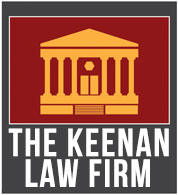Product liability cases in Georgia revolve around the issue of determining whether a manufacturer, distributor, or seller can be held responsible for a defective product that caused harm to a consumer. These cases often hinge on establishing a direct link between the product defect and the injury sustained. Forensic evidence plays a crucial role in providing this proof. By examining scientific and technical aspects of the product, forensic evidence can clarify how and why the product failed and whether this failure resulted in the injury.
The legal framework surrounding product liability in Georgia is complex, and each case presents unique challenges. Understanding the importance of forensic evidence is key to navigating these claims, as it offers a concrete way to demonstrate causation and negligence.
The Role of Forensic Evidence in Proving Product Defects
In product liability cases, one of the first hurdles is proving that the product in question was indeed defective. Forensic evidence allows for a thorough investigation into the product’s design, manufacture, and the circumstances surrounding its failure. When a product malfunctions, forensic scientists can carefully analyze it to determine if it was inherently defective due to poor design, a manufacturing error, or inadequate warnings.
For example, if a household appliance causes a fire, forensic specialists can examine the product to identify if faulty wiring or a design flaw led to the incident. Through detailed analysis, forensic scientists can establish the root cause of the failure. This evidence is critical because it provides an objective assessment, helping jurors or judges understand how the product malfunctioned and why the manufacturer may be responsible.
Types of Product Defects in Georgia Law
Georgia law recognizes three main types of product defects: design defects, manufacturing defects, and failure to warn or provide proper instructions. Each category presents different challenges when proving fault, and forensic evidence is essential to support these claims.
A design defect occurs when the product’s very design is inherently unsafe. Forensic analysis can help demonstrate that even when used as intended, the product presents an unreasonable risk of harm. This could involve examining prototypes, blueprints, or testing models to show that the product’s design deviated from safe engineering practices.
Manufacturing defects, on the other hand, arise when something goes wrong during the production process. In these cases, forensic investigation might involve comparing the defective product to others from the same production line, identifying irregularities, or pinpointing lapses in quality control. Forensic specialists can look for substandard materials or flaws in the manufacturing process that contributed to the product’s failure.
Failure to warn claims arise when a manufacturer does not adequately inform consumers about potential risks associated with the product. In these cases, forensic evidence might involve examining user manuals, labels, and warnings to determine whether the information provided was sufficient or if the product posed a hidden danger that the consumer could not have anticipated.
Causation and the Role of Forensic Science
Proving that a defect existed is only one aspect of a product liability case. The next critical step is demonstrating that the defect caused the injury. This is where forensic science becomes even more essential. Causation can be particularly complex in product liability cases because multiple factors may contribute to an accident or injury.
Forensic specialists analyze the circumstances of the incident to determine the chain of events that led to the injury. In cases involving complex machinery, vehicles, or medical devices, this analysis is vital to establish how the product interacted with other factors and ultimately caused harm.
For instance, in cases involving car accidents where a defect is suspected, forensic engineers can reconstruct the accident to identify whether the defect in the vehicle directly contributed to the crash or the injuries sustained. They can analyze data from the vehicle’s event data recorder (EDR), also known as the black box, to provide insights into the moments leading up to the incident. This evidence can clarify whether the car malfunctioned in a way that the manufacturer should have anticipated.
Forensic pathologists may also play a role in product liability cases, particularly when determining the cause of injuries or death. In cases involving medical devices or pharmaceuticals, they can analyze medical records and autopsy results to assess whether the defect contributed to the adverse outcome.
Forensic Techniques Used in Product Liability Cases
The application of forensic science in product liability cases relies on a range of techniques and disciplines. Each forensic specialist brings a different set of skills and methods to analyze the evidence. This multi-disciplinary approach strengthens the overall case by providing a comprehensive examination of the product and the incident in question.
One common technique used in product liability investigations is materials analysis. This involves examining the composition of the product to identify any weaknesses or flaws that contributed to its failure. For example, if a structural failure occurs in a construction tool, materials analysis can reveal whether substandard metals or plastics were used, leading to the defect.
Another important forensic tool is failure analysis, which is a detailed process used to determine why a product did not perform as intended. By simulating the conditions under which the product was used, forensic engineers can assess whether the product was likely to fail due to a design flaw, wear and tear, or misuse by the consumer. This type of analysis is particularly useful in cases involving machinery, vehicles, and industrial products.
Digital forensics also plays a growing role in product liability cases, especially as more products incorporate electronic components. For instance, forensic specialists can retrieve data from electronic devices or systems to assess whether software errors or electrical malfunctions contributed to the failure. This is especially relevant in cases involving complex products like medical devices, cars, or consumer electronics.
Verdicts & Settlements
Challenges of Forensic Evidence in Georgia Product Liability Cases
While forensic evidence can be incredibly powerful in product liability cases, it is not without challenges. One major issue is the need to preserve the product in its post-incident state for analysis. If the product is tampered with or altered before a forensic investigation can take place, it may be difficult to obtain accurate results. Therefore, it is essential for those involved in a potential product liability case to take immediate steps to preserve all evidence related to the incident.
Another challenge is ensuring that the forensic methods used are scientifically valid and accepted in court. Under Georgia law, as in many jurisdictions, testimony and forensic evidence must meet strict standards of reliability. Courts often apply the Daubert standard, which requires that the methods used by forensic specialists are based on sound scientific principles and can be tested and validated by the wider scientific community.
The complexity of forensic evidence also means that both sides in a product liability case will often present competing forensic testimony. It is up to the court to weigh this evidence and determine which conclusions are most credible. This can make product liability cases highly contentious and reliant on the clarity and persuasiveness of the forensic specialists involved.
How Forensic Evidence Can Influence the Outcome of a Case
In Georgia product liability cases, forensic evidence can often tip the scales in favor of the plaintiff or the defendant. A well-presented forensic analysis that clearly demonstrates a product defect and its causal link to the injury can greatly strengthen a plaintiff’s case. It provides tangible, scientific proof that the manufacturer was negligent in producing or designing a defective product.
For defendants, forensic evidence can also be crucial in defending against a claim. If forensic analysis shows that the product was not defective or that the injury occurred due to misuse or external factors unrelated to the product, this evidence can help the defense refute the plaintiff’s allegations.
Courts place significant weight on forensic evidence because it provides objective, scientific insight into the case. Unlike witness testimony, which can be influenced by memory or emotion, forensic evidence offers concrete data that can often be replicated or verified by other specialists. This makes it a critical component in the pursuit of justice in product liability cases.
Forensic evidence plays an indispensable role in Georgia product liability cases. From proving the existence of a defect to establishing a direct link between the defect and the injury, forensic science offers a powerful tool for both plaintiffs and defendants. It provides the detailed analysis and objective evidence necessary to determine liability in these often-complex cases.
If you or a loved one has been injured by a defective product, securing strong forensic evidence is key to building a successful claim. The team at Keenan Law Firm has extensive experience in handling product liability cases in Georgia and can help guide you through every step of the legal process. With a deep understanding of the role forensic evidence plays, Keenan Law Firm is committed to pursuing justice on your behalf and ensuring that negligent manufacturers are held accountable. Reach out to Keenan Law Firm today to discuss your case and take the first step toward securing the compensation you deserve.










